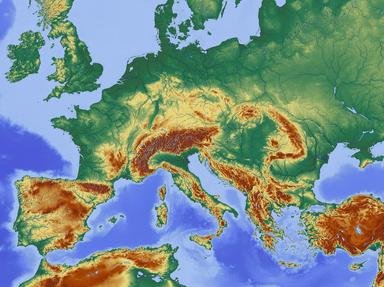Quiz Answer Key and Fun Facts
1. The Baltic states are three small countries in Northern Europe. They share a common element of being under Russian control (with some exceptions) from the 1700s to independence in 1991. Which one of the following countries is not a Baltic state?
2. The Baltic states have struggled with the Sovietization of their countries. Pro-independence events occurred long before the Berlin Wall came down in 1989. Which option from the following did *NOT* occur as a ground-swell towards independence in the late 1980s?
3. Being the Baltic states does not mean that the majority of people in each state is a Balt. This may be the case in the southern two states but not Estonia. Armed with this knowledge, which language from the ones offered does the Estonian language most resemble?
4. While geographically Estonia is a Baltic state, do Estonians identify culturally themselves as being Balts?
5. Estonia, like its Baltic neighbours, has a horizontal tri-band flag. Estonia's flag of blue, black and white is an almost unique colour combination in the world's national flags. Which is the only other national flag in the world that has the same three colours as Estonia's flag?
6. One of the reasons Estonia has progressed economically post-independence is because the Estonian government has provided a broad and accessible telecommunication network. Which of the following electronic communications companies was founded in Estonia?
7. Tallinn is an unusual city in that it has a very distinctive old town yet also has a thriving "new" city that is considered one of the top ten digital cities in the world as well as being a global city. What part of Tallinn is listed as a World Cultural Heritage Site in 1997?
8. Estonia, like most of eastern Europe, has not been a land of plenty, and so food is treated with respect at all times. The French may say "Bon appetit" but in Estonia they say "Jätku leiba". What does this mean?
9. With four distinct seasons including a cold winter and mild summer, sports in Estonia tend to be either indoors or snow sports. In which one of the following sports did Estonia *NOT* win an Olympic medal in the 20th century?
10. Today Estonia is recognised as a nation with a fierce independence. It has escaped its past of foreign ownership, yet remains respectful of this fact. Rather than being hindered by its position at the crossroads of western and eastern Europe, it has capitalised on this geography. Which of the following best exemplifies this geographical advantage?
Source: Author
1nn1
This quiz was reviewed by FunTrivia editor
trident before going online.
Any errors found in FunTrivia content are routinely corrected through our feedback system.
